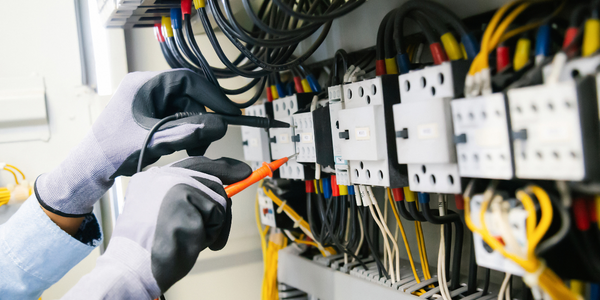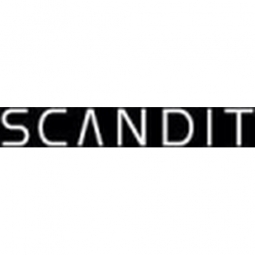
Technology Category
- Analytics & Modeling - Virtual & Augmented Reality Software
- Wearables - Augmented Reality Glasses, Headsets & Controllers
Applicable Industries
- Electrical Grids
- Electronics
Applicable Functions
- Procurement
- Sales & Marketing
Use Cases
- Augmented Reality
- Mixed Reality
The Customer
Elektro-Material
About The Customer
Elektro-Material AG is a leading supplier of electrical components to Switzerland’s construction industry. They are part of the Rexel Group, a global wholesaler of electrical goods with over 2,100 branches in 35 countries. Elektro-Material’s customers range from industrial buyers, builders and building contractors, to electricians and construction companies. Customers can make purchases from a comprehensive catalogue of 250,000 electrical goods, by phone through a sales representative; in person, at any of Elektro-Material’s nine branches across Switzerland; and through digital channels such as the EM webshop, and the EM order app from their iOS and Android smartphones.
The Challenge
Elektro-Material AG, a leading supplier of electrical components to Switzerland’s construction industry, faced a significant challenge with their EM order app. The app, which was a significant source of business revenue, had an open source scanning solution that customers used to scan barcodes from a catalogue or print barcode labels for products that did not have barcodes. However, customers found the scanning process slow, often taking several seconds to scan a single barcode. This delay resulted in a poor user experience and led customers to prefer reordering over the phone or at an Elektro-Material branch, especially for large orders. Additionally, some products only had serial numbers, which could not be captured by the open source scanning component of the EM app. These performance issues negatively impacted the customer’s purchase experience and reduced the number of orders originating through the app. Elektro-Material wanted to improve the app’s performance and increase customer stickiness.
The Solution
Elektro-Material selected Scandit’s smartphone scanning technology to replace the open source scanning software in the EM app. Scandit’s barcode scanner SDK is compatible with over 20,000 smartphone models, providing an instantaneous scanning response. This was especially helpful for Elektro-Material, who had no control over the device types that their customers used. The transformation was quick and customers no longer experienced delays while ordering. Elektro-Material further enhanced the capability of Scandit’s barcode scanner SDK with additional features such as OCR (Optical Character Recognition) text recognition. Customers can now easily capture serial numbers on products that don’t have barcodes using the OCR scanner in the EM app. The company also added innovative features to the EM app including Scandit’s MatrixScan and augmented reality modules. With MatrixScan, customers save a significant amount of time, as they can scan multiple barcodes in a single sequence. The EM app is powered by Scandit’s augmented reality information overlays, which connects to Elektro-Material’s ERP system, instantly offering customers detailed product information on their smartphone screens with a simple hover over the barcode and without the need to login to the website.
Operational Impact
Quantitative Benefit

Case Study missing?
Start adding your own!
Register with your work email and create a new case study profile for your business.
Related Case Studies.

Case Study
Remote Temperature Monitoring of Perishable Goods Saves Money
RMONI was facing temperature monitoring challenges in a cold chain business. A cold chain must be established and maintained to ensure goods have been properly refrigerated during every step of the process, making temperature monitoring a critical business function. Manual registration practice can be very costly, labor intensive and prone to mistakes.

Case Study
Hydro One Leads the Way In Smart Meter Development
In 2010, Ontario’s energy board mandated that time-of-use (TOU) pricing for consumers be available for all consumers on a regulated price plan. To meet this requirement, Hydro One needed to quickly deploy a smart meter and intelligent communications network solution to meet the provincial government’s requirement at a low cost. The network needed to cover Hydro One’s expansive service territory, which has a land mass twice the size of Texas, and its customers live in a mix of urban, rural, and remote areas, some places only accessible by air, rail, boat or snowmobile. Most importantly, the network needed to enable future enterprise-wide business efficiencies, modernization of distribution infrastructure and enhanced customer service. To meet these needs, Hydro One conceptualized an end-to-end solution leveraging open standards and Internet Protocols (IP) at all communication levels. The utility drew upon industry leaders like Trilliant to realize this vision.

Case Study
Selling more with Whirlpool
Whirlpool wanted to add connectivity to appliances and transform the company's relationship with customers. Traditionally, Whirlpool interaction with customers was limited to purchases made once every ten years. Connected washer and dryers provide exciting new features like remote management of start times and inter-machine communication.

Case Study
Cloud Solution for Energy Management Platform-Schneider Electric
Schneider Electric required a cloud solution for its energy management platform to manage high computational operations, which were essential for catering to client requirements. As the business involves storage and analysis of huge amounts of data, the company also needed a convenient and scalable storage solution to facilitate operations efficiently.





